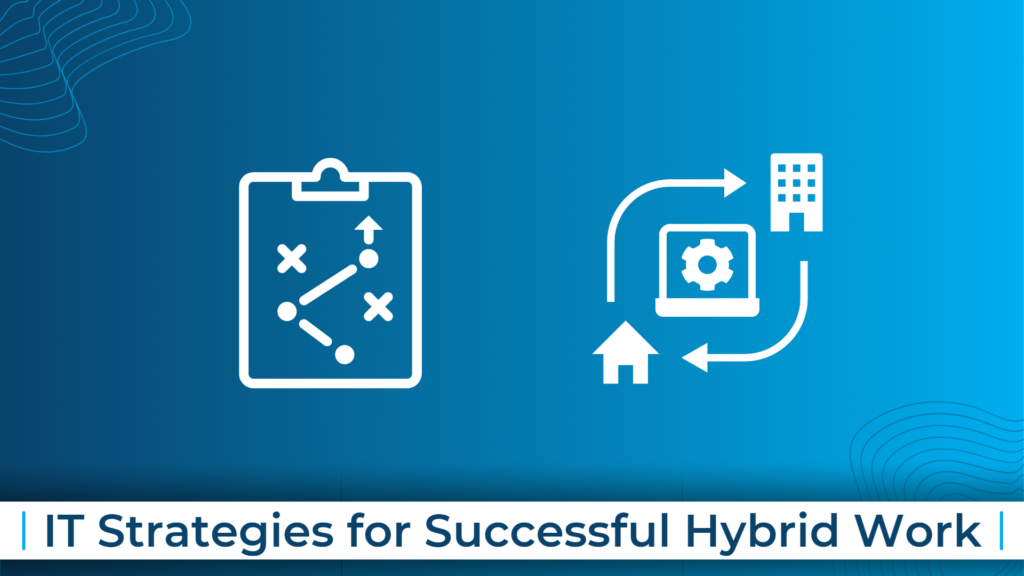
IT Strategies for Successful Hybrid Work
As a business owner, effective IT strategies to manage a hybrid workforce is essential for driving success in the digital era. The evolving work landscape requires strategic IT management practices that support seamless operations and maximise productivity. In this blog post, we will explore practical strategies from a business management perspective to effectively navigate the complexities of IT management in a hybrid work environment. Let’s dive in and discover how you can leverage technology to empower your business
Align Your IT Strategies with Your Business Goals:
To effectively manage IT for a hybrid workforce, it’s crucial to align your IT strategy with your broader business goals. Understand the specific needs and objectives of your hybrid work model and tailor your IT solutions accordingly.
This alignment ensures that technology investments directly contribute to achieving your business objectives and provide a competitive advantage.
With help of an external IT company, you can effectively make decisions with the help of expert, ensuring that you are making the most cost-efficient decisions that will help your business grow.
Invest in Scalable Infrastructure:
Hybrid work environments demand a scalable IT infrastructure that can accommodate the evolving needs of your workforce. Invest in cloud-based solutions and virtualisation technologies that allow for easy scalability.
An external IT company could help you set up a hosted desktop infrastructure, move your files to the cloud and cut down on your hardware costs, streamlining your business for the next generation of computing.
This flexibility enables you to adapt to changing work dynamics, seamlessly onboard new employees, and efficiently scale your operations as your business grows.
Prioritise Cybersecurity Measures:
The hybrid work model introduces new security challenges, with employees accessing company resources from various locations and devices. Implement robust cybersecurity measures to protect sensitive business data and mitigate the risk of cyber threats.
This includes utilising firewalls, implementing multi-factor authentication, conducting regular security audits, and providing cybersecurity training to employees.
With the help of an MSP, you could leave all the ‘setting up’ of these security measures to them, leaving you with more time to grow your business.
Adopt Effective Communication and Collaboration:
In a hybrid work environment, effective communication and collaboration are crucial for maintaining productivity and cohesion. Invest in collaboration tools that enable seamless communication, such as video conferencing, project management platforms, and instant messaging applications.
By facilitating efficient communication and collaboration, you empower your teams to work together seamlessly, regardless of their location.
Implement Remote Support and Monitoring:
To ensure smooth operations, it’s essential to implement remote support and monitoring capabilities.
Remote IT support allows your workforce to quickly address technical issues, minimising downtime and enhancing productivity. An external IT company would be a cost effective and reliable way of ensuring that your business is able to be remotely monitored.
It’s one thing to fix cyber-attacks after they happen, but wouldn’t it be better if they didn’t happen at all. Here at Genmar, we are constantly monitoring for potential vulnerabilities so that we stop cyber attacks before they happen.
Regularly Assess and Optimise IT Infrastructure:
Periodically assess your IT infrastructure to identify areas for optimisation and improvement. Evaluate the performance of your systems, review security protocols, and seek feedback from employees regarding their IT experiences.
A good external IT company would always be looking at ways to save your business money and your employees time by ensuring that your IT is consistently optimised. For example, a business we worked with was about to buy an expensive server replacement, instead, we migrated them to AzureAD and set them up with a NAS instead. This saved them thousands.
This ongoing assessment allows you to fine-tune your IT strategy and make informed decisions to optimise your hybrid work environment continually.
Strategic IT management is key to driving business success in a hybrid work environment. By aligning IT strategy with business goals, investing in scalable infrastructure, prioritising cybersecurity measures, fostering effective communication and collaboration, implementing remote support and monitoring, and regularly assessing and optimising your IT infrastructure, you can empower your business for growth and productivity. Embrace the potential of technology in the digital era and leverage it to propel your business forward in the dynamic world of hybrid work.
To set up your business for hybrid work, or to elevate your already hybrid workforce, check out our IT Support and get in touch.



Comments are closed.